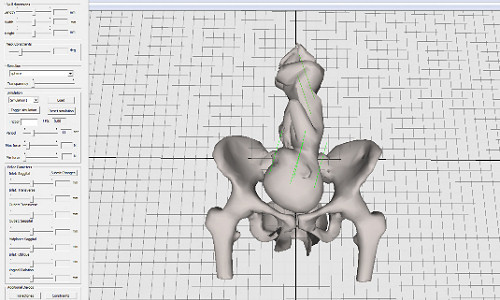Computer scientists from the University of East Anglia are working to create a virtual birthing simulator that will help doctors and midwives prepare for unusual or dangerous births.
The new programme will take into account factors such as the shape of the mother’s body and the positioning of the baby to provide patient-specific birth predictions.
The research will be presented at the International Conference on E-Health and Bioengineering in Romania today.
Dr Rudy Lapeer from UEA’s school of Computing Sciences is leading the project. He said: “We are creating a forward engineered simulation of childbirth using 3D graphics to simulate the sequence of movements as a baby descends through the pelvis during labour
“Users will be able to input key anatomical data – such as the size and shape of the mother’s pelvis, and the baby’s head and torso. By doing this you will be able to set different bespoke scenarios for both the mother and baby.”
The simulation software will see ultra-sound data used to re-create a geometric model of a baby’s skull and body in 3D graphics as well as the mother’s body and pelvis. Programmers are also taking into account the force from the mother pushing during labour and are even modelling a ‘virtual’ midwife’s hands which can interact with the baby’s head.
“Because this programme is patient-specific, doctors and midwives will be able to see how a birth may take place before it has happened on a case-by-case basis. For example, you would be able to see if a baby’s shoulders will get stuck.
“We hope that this could help to avoid complicated births altogether by guiding people in the medical profession to advise on caesarean sections where necessary.”
‘Towards a Forward Engineered Simulation of the Cardinal Movements of Human Childbirth’ by Zelimkhan Gerikhanov, Vilius Audinis and Rudy Lapeer will be presented at the 4th IEEE International Conference on E-Health and Bioengineering on November 22, 2013.
Story Source:
The above story is based on materials provided by University of East Anglia.





